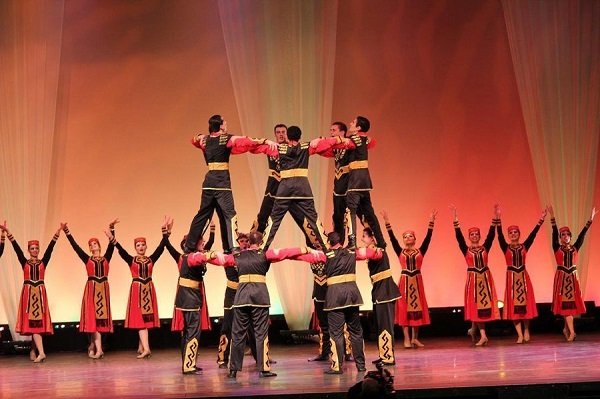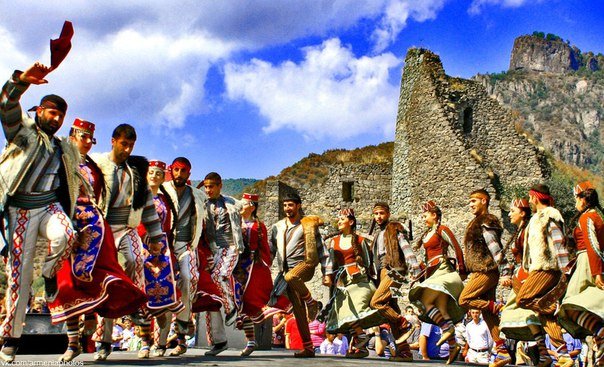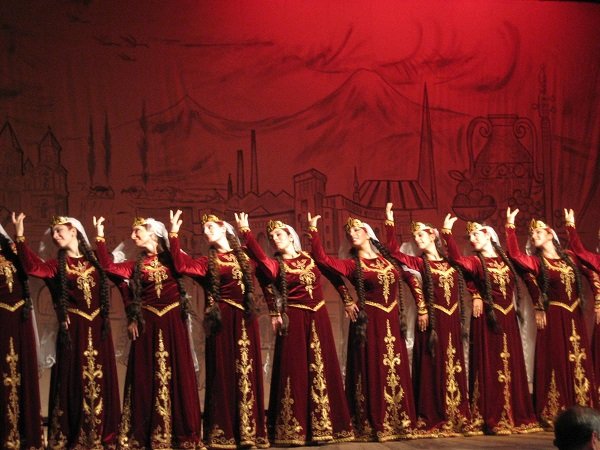AYRARAT TOUR
Welcome to Armenia!
Armenian Dance

Armenian Dance
The Armenian dance heritage has been one of the oldest, richest and most varied in the Near East. From the fifth to the third millennia B.C., in the higher regions of
Armenia there are rock paintings of scenes of country dancing. These dances were probably accompanied by certain kinds of songs or musical instruments. In the 5th
century Moses of Khorene (Movsés Khorenats'i) himself had heard of how the old descendants of Aram (that is Armenians) make mention of these things (epic tales) in the ballads for the lyre and their songs and dances.
Yarkhushta
One of the most energetic Armenian dances is the martial dance Yarkhushta. Yarkhushta is believed to have its origins in the early Middle Ages as it is mentioned in the works of Movses Khorenatsi, Faustus of Byzantium, and Grigor Magistros.
Kochari
Kochari is an Armenian traditional and, probably, the most popular national dance and it is usually a men and women group dance. Kochari has a very famous tune played on "zurna” and "dhol” (traditional Armenian music instruments).
It is widely spread across Armenia. Almost every one knows this dance,no matter the age. The dance consists of impulsive and slower parts, that come one after another.
Kochari goes back to the pagan culture of
Armenia, when
Armenians worshiped animals.
Shalakho
Shalakho is an ancient Armenian dance. Men would initially
perform
shalakho during various gatherings in order to win a woman’s attention. However, with time women started
dancing shalakho as well!
Nowadays, this dance can be performed by one person or a group of dancers, both men and women.
Berd
Berd (translated as "fortress”) is also an ancient Armenian dance, derived from a historical city of Armenia, Vaspurakan.
Berd is a circle of men standing on the shoulders of one another and rotating. If you have the chance to see this dance, you will notice that the dancers’ shape resembles a fortress.
The dancers wear ” taraz” (Armenian national costume) during the dance!








